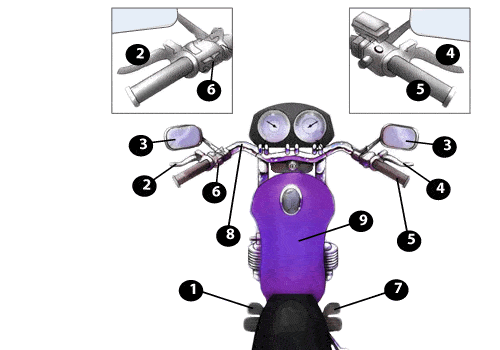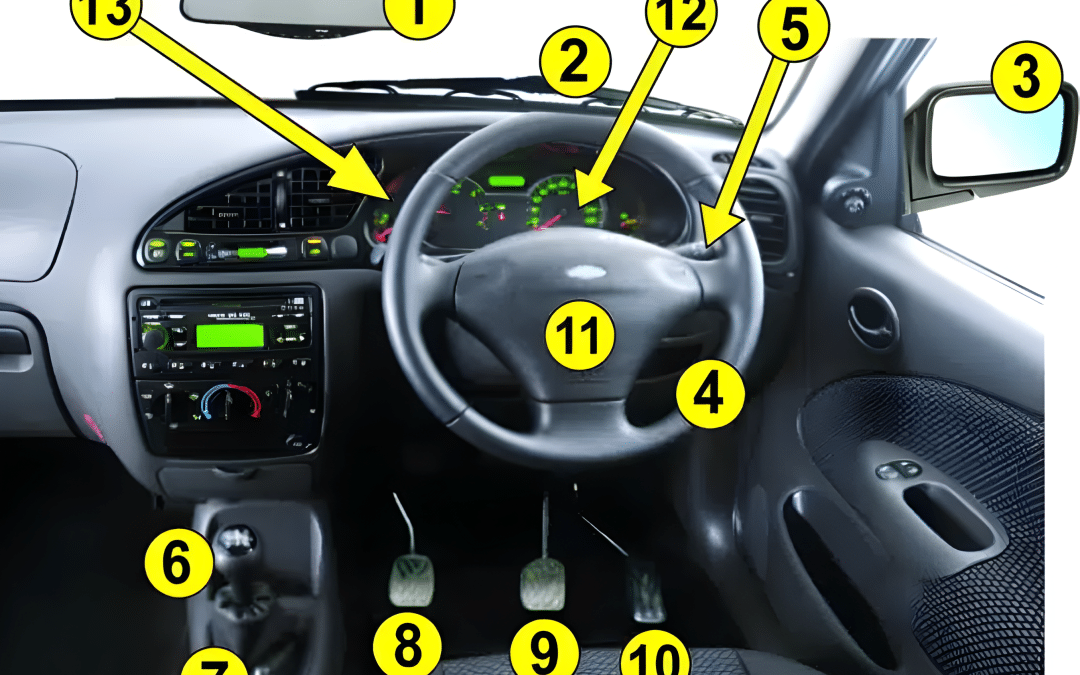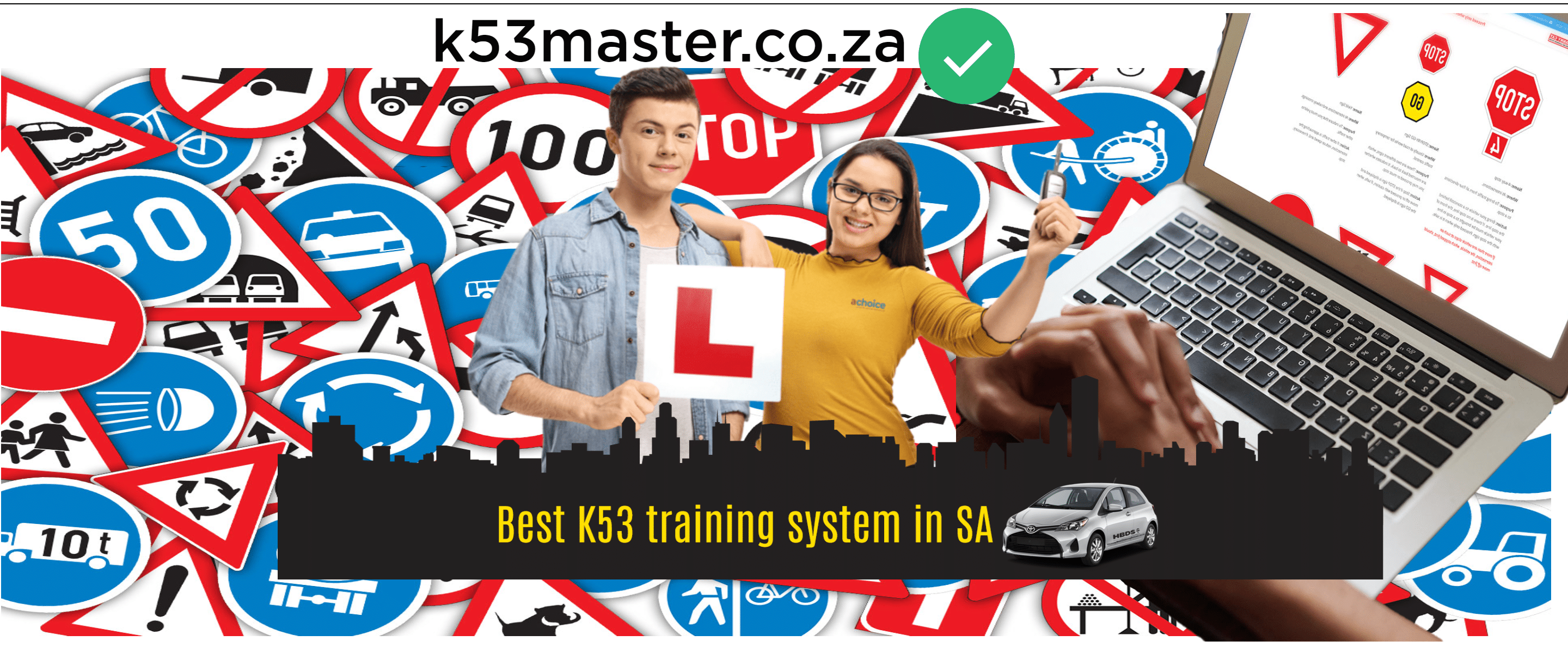When preparing for your Learner’s Licence Test, understanding vehicle controls is crucial. This guide provides a comprehensive overview of the controls you’ll encounter, ensuring you’re well-prepared for the test.
Importance of Vehicle Controls in the Learner’s Test
The Learner’s Licence Test comprises several sections, with the “Vehicle Controls” section being one of the most straightforward. However, it’s essential to note that candidates can afford the fewest mistakes here. Out of approximately 8 questions on vehicle controls, learners must correctly answer at least 6 (75%) to pass this section. Just three incorrect answers can result in failing this segment.
Key Vehicle Controls to Know
For the test, it’s vital to familiarize yourself with the names and functions of various vehicle controls. Additionally, understanding how these controls interact is crucial. For instance, a common query might ask which controls are engaged when turning the car. While knowing the answer is important, always read each question and its options meticulously to avoid potential pitfalls.
Vehicle Controls for Cars:
- Rear-view Mirror: Offers a view of the rear, enhancing safety.
- Windscreen Wipers Switch: Adjusts wiper settings for clear visibility during rain and cleans the windscreen.
- Side Mirror: Provides a view of the vehicle’s sides, ensuring safe lane changes.
- Steering Wheel: Directs the vehicle. Always keep both hands on the wheel, except when changing gears or signalling.
- Direction Indicator: Signals intentions to turn left or right.
- Gear Lever: Facilitates gear changes.
- Hand/Parking Brake: Ensures the vehicle remains stationary, especially on slopes.
- Clutch Pedal: Essential for gear changes in manual cars.
- Foot-brake Pedal: Reduces speed or brings the vehicle to a stop.
- Accelerator: Increases the vehicle’s speed.
- Hooter/Horn: The hooter/horn is a button or device on the steering wheel that, when pressed, emits a loud sound. It’s used to get the attention of other drivers and signal in various traffic situations.
- Speedometer: Displays its current speed in either miles per hour (mph) or kilometers per hour (km/h).
- Windscreen wipers switch: Lets you control the windshield wipers for clearing rain or debris.
Vehicle Controls for Motorcycles:

- Gear Lever/Selector: Changes and selects gears.
- Clutch: Facilitates gear changes.
- Mirror: Enhances rear visibility for safety.
- Front Brake: A lever on the handlebars that, when squeezed, applies pressure to slow down or stop the motorcycle.
- Accelerator/throttle: Increases the motorcycle’s speed.
- Direction Indicator: Signals turning intentions.
- Rear Brake: A pedal near the rider’s right foot. Pressing it slows down or stops the rear wheel, aiding in braking and control.
- Handlebars: Steers the motorcycle.
- Fuel Tank: Where gasoline is stored to power the engine.
Local Insights for South African Learners
For those taking the test in South Africa, remember that vehicles are driven on the left side of the road. A helpful tip for distinguishing between the indicator and windscreen wipers is to note their respective positions relative to the steering wheel. For instance, in our diagram, the windscreen wipers are labelled as number 10.
Understanding Vehicle Controls: A Comprehensive Guide

Vehicle controls are the integral components and systems in a vehicle that empower the driver to operate and control its movement seamlessly. From the intricacies of steering to the precision of braking, understanding these controls is paramount for safe and efficient driving. In this guide, we’ll explore the different vehicle controls, their functions, and their significance in ensuring a smooth driving experience.
Steering System
The steering system is the heart of a vehicle’s direction control. It allows the driver to navigate and guide the vehicle in the desired direction.
- Steering Wheel: The primary control tool, the steering wheel’s rotation determines the vehicle’s direction. Modern vehicles often incorporate additional controls on the steering wheel, such as audio controls and cruise control settings.
- Power Steering: A boon for drivers, power steering uses hydraulic or electric systems to assist in turning the steering wheel, requiring significantly less effort, especially during low-speed maneuvers.
Braking System
The braking system is a vehicle’s primary safety mechanism. It allows drivers to reduce speed or bring the vehicle to a complete stop.
- Pedal: The foot-operated brake pedal activates the braking system. Pressing it applies pressure to the brake pads, which in turn slows down the vehicle.
- Handbrake: Also known as the parking brake, it’s primarily used to keep the vehicle stationary, especially on inclines. It operates separately from the main braking system.
Transmission System
The transmission system is the bridge between the engine’s power and the vehicle’s movement. It ensures the right amount of power is delivered to the wheels.
- Gear Shift: Whether manual or automatic, the gear shift allows drivers to select the appropriate gear ratio for the driving conditions.
- Clutch: In manual vehicles, the clutch pedal engages and disengages the gears, allowing for smooth transitions between different speeds.
Lighting and Indicators
Visibility and communication are vital on the road. The vehicle’s lighting and indicators play a crucial role in this.
- Headlights: Essential for nighttime driving, headlights illuminate the road ahead. They come in various modes like low beam, high beam, and fog lights.
- Indicators: These blinking lights signal the vehicle’s intention to turn or change lanes, alerting other road users.
Additional Controls
Modern vehicles come equipped with a range of additional controls to enhance the driving experience.
- Wipers: With adjustable speeds, wipers clear the windshield of rain, ensuring clear visibility.
- Horn: A tool for alerting or warning other road users of the vehicle’s presence.
- Mirrors: Side and rear-view mirrors provide a panoramic view of the surroundings, aiding in safe driving.
Conclusion
A thorough understanding of vehicle controls is not just essential for passing driving tests but is fundamental for every driver’s safety and comfort. By acquainting oneself with these controls and their functions, drivers can ensure a safer, more confident, and smoother driving experience.


